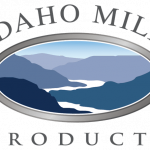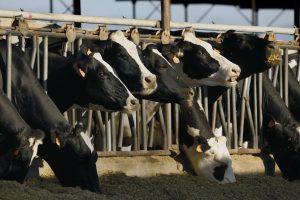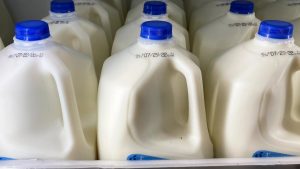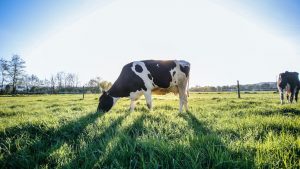
The August Federal order Class III milk price was announced at $17.19 per hundredweight, up $3.42 from July but $2.91 below August 2022.
It is the highest Class III price since April. The eight-month average stands at $16.98, down from $22.54 a year ago, and $16.78 in 2021.
Friday’s Class III futures settlements portend a September price at $18.61; October, $18.92; November, $18.59; December, $18.44; January 2024, $18.41; February, $18.48; and March at $18.48 per cwt.
Feed ratio ends decline
A drop in corn and alfalfa hay prices helped end seven months of decline in the so-called milk feed ratio. The Agriculture Department’s Ag Prices report shows the July ratio at 1.38, up from 1.36 in June, but compares to 1.77 July 2022.
The All Milk Price average was down for the ninth consecutive month, slipping to $17.40 per hundredweight, down 50 cents from June and $8.10 below July 2022.
The national corn price averaged $6.22 per bushel, down 27 cents from June and $1.03 per bushel below July 2022.
Soybeans averaged $14.70 per bushel, up 20 cents from June but 80 cents per bushel below a year ago.
Alfalfa dropped to $244 per ton, down $19 per ton from June and $34 per ton below a year ago.
The July cull price for beef and dairy combined climbed to an average $111 per cwt., up $4 from June, $20.40 above July 2022, and $39.40 above the 2011 base average.
The income over feed calculation also increased as feed costs moved down enough to offset the lower All-Milk price, according to dairy economist Bill Brooks, of Stoneheart Consulting in Dearborn, Mo., and the ratio was below the 5-year average for the 14th month running.
“Milk production margins were higher for the first time since November 2022,” says Brooks. “Income over feed costs in July were below the $8 per cwt. level needed for steady to higher milk production for the sixth month in a row. Input prices were lower, but all three commodities were in the top five for July all time. Feed costs were the second highest ever for the month of July and the 26th highest of all time. The All-Milk price stayed out of the top 100 at the 133rd highest recorded.”
GDT reverses, up 2.7%
Tuesday’s Global Dairy Trade auction saw its weighted average head up for the first time since May 2, up 2.7%, following declines of 7.4% on Aug. 15 and 4.3% on Aug. 1.
Traders brought 83.2 million pounds of product to market, up from 74 million on Aug. 15, and the most ever. The average metric ton price crept to $2,888 U.S., up from $2,875 on Aug. 15.
Whole milk powder led the gains, jumping 5.3%, after leading the declines on Aug. 15, with a 10.9% drop. Skim milk powder was down 1.6%, after dropping 5.2% last time, and buttermilk powder was down 6.5%.
Anhydrous milkfat was up 2.7%, after dropping 5.3%, and GDT butter was up 1.1%, following a 3.0% decline.
GDT Cheddar was off 0.6%, after jumping 5.8% on Aug. 15.
StoneX says the GDT 80% butterfat butter price equates to $2.0304 per pound U.S., up 2.2 cents from the Aug. 15 event, and compares to CME butter which closed Tuesday at a pricey $2.71.
HighGround Dairy points out that “Fonterra announced last week that it was lowering its offerings of whole milk powder and skim milk powder at GDT Events, including today’s, shifting the volumes to the Pulse platform.
Cheese strengthens
Cheese prices entered September a little stronger as traders anticipated the long Labor Day weekend and the July Dairy Products report on Tuesday. The Cheddar blocks climbed to $1.9925 per pound last Tuesday but closed Friday at $1.95, up a half-cent on the week and 18.50 cents above a year ago.
The barrels finished at $1.87 per pound, 7 cents higher and 1.25 cents above a year ago.
Sales at the market of last resort totaled 3 loads of block for the week and 15 for August, down from 61 in July. Barrel sales totaled 2 for the week and 21 for the month, down from 169 in July.
The markets were closed for Labor Day but traders left the blocks unchanged Tuesday, holding at $1.95. The barrels were offered a quarter-cent lower to $1.8675, 8.25 cents below the blocks.
StoneX points out that, while July milk production was down 0.5% from last year, “higher protein and fat content in the milk and less fluid milk consumption means solids available to processing were likely up about 0.9% from last year, but that is a slowdown from plus 1.7% in June.
Less growth in solids available for processors will likely mean a slowdown in the growth for cheese, butter and powder.”
Milk offers to Midwest cheesemakers remained somewhat mum last week despite the upcoming holiday weekend. Dairy Market News says the previous week’s high temperatures and elevated humidity in the Upper Midwest kept milk restrained and spot prices above Class III. Milk output is slowing seasonally in the Midwest and cow comfort is being impacted.
Strong to steady retail and food service cheese demand is reported in the West. Export demand is moderate. Some believe less active export demand is sending more barrel cheese to the CME. Cheese production is steady despite tighter milk and cream volumes throughout the West. Processing capacity is in good balance with milk supply, says DMN, and some say inventory levels are contributing to the bullish prices.
Butter slipped to $2.62 per pound last Tuesday, lowest since Aug. 3, but closed Friday at $2.66, a penny lower on the week and 44 cents below a year ago. There were 44 sales on the week and 249 loads for August, up from 150 in July.
Tuesday’s butter was up a nickel, hitting $2.71, with 19 loads finding new homes.
Midwest churning has picked up in recent weeks with some reports that it’s been steady throughout the summer, depending on location. Cream is more available due to the spin-off of stronger bottling for school re-openings. Spot cream multiples were in the Class IV “comfort zone” of low to mid 1.20s, says DMN, and Labor Day plant downtime also added to the cream supply.
Cream is tight in the West, but plant shutdowns for the holiday may have loosen some of that. The limited spot loads were commanding higher multiples. A few plants have scheduled maintenance for their churns ahead of the anticipated heavier running times as fall arrives.
Traders took the powder down 1.75 cents Tuesday, on 5 trades, dropping to $1.0575 per pound, lowest CME price since Nov. 5, 2020.
Dry whey hit 30.50 cents per pound Thursday, highest since May 9, and stayed there Friday, up 2.50 cents on the week but 16 cents below a year ago. The week saw 8 sales and 58 for the month of August, down from 152 in July.
CME whey gained 1.50 cents Tuesday, climbing to 32 cents per pound, highest since May 8.






















